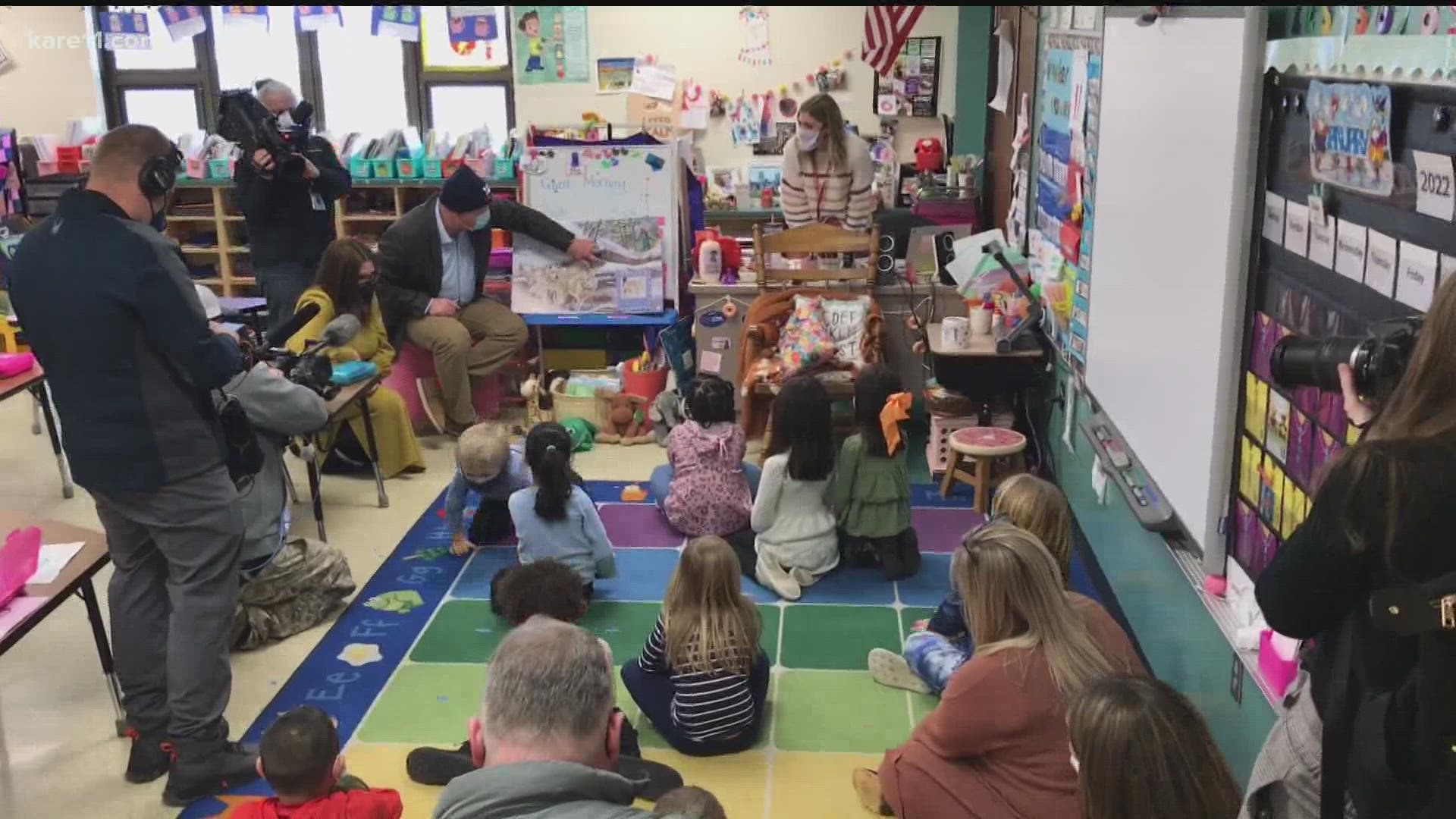INVER GROVE HEIGHTS, Minn. — Gov. Tim Walz is proposing a sweeping wish list of programs for children and their families, with a price tag of $5 billion. It includes expansion of childcare assistance, pre-K funding, per pupil aid to school districts, and universal free meals in schools just to name a few.
Gov. Walz, Lt. Gov. Peggy Flanagan, and Minnesota Education Commissioner Heather Mueller announced the package of spending proposals at Hilltop Elementary School in the Twin Cities suburb of Inver Grove Heights.
Walz and Flanagan visited with preschoolers at the school's Early Learning Center, read to a class of kindergartners and met with staff who work in wrap-around support programs for students and their families.
"The end result of all of this is an opportunity for a child to be in a safe, loving, nurturing environment, where their future is boundless," Walz told reporters who gathered in the school's gym.
"Minnesota needs to be the best state in the country for families to raise their children and we believe this budget does that."
The $7.7 billion projected budget surplus for the current two-year cycle has prompted Walz and his leadership team to dream big about ways to make historic investments in children.
"I don't want us to lose sight of people. People are at the heart of everything that we are proposing and talking about here," Lt. Gov. Flanagan told reporters.
She said, as someone who grew up in a low-income household that needed to take advantage of public assistance programs and free school lunches, she's keenly aware of the difference this transitional help can make in the lives of children.
"The budget forecast adjusts the childcare assistance basic sliding scale fee, which will add another 16,000 families, or 32,000 total families, to be served by this program, virtually eliminating the waiting list," Flanagan said to applause.
"That’s my favorite part!"
Walz is a career teacher who has focused on trying to improve public schools and close the achievement and opportunity gaps that exist in the state. His attention has been divided by the public health crisis of the COVID pandemic and the fallout resulting from George Floyd's murder in police custody.
This was the third media event for the Walz Team's rollout of their plan for using the surplus. The governor has also proposed a record-setting $2.7 billion public works construction bonding bill.
Bundled into the governor's blueprint for children and families is the start-up funding to launch a paid family leave insurance program if the legislature goes along with it. Employees and employers would both pay into the fund, similar to the way the unemployment insurance system works, and could then draw on it when needed.
The Walz package also includes money for youth development and training programs and expansion of mental health services for youth, both the school-based programs and those in the community.
"We know that if we have the opportunity for our students to have early access, it means we are prepping them for what they need to be able to do when they get into school," Commissioner Mueller told reporters.
"Every single student deserves that."
Mueller said raising the per-pupil aid formula is something that schools welcome because they have the flexibility to use the money where they need it most to adjust to the unpredictable terrain of the current pandemic.
The governor can propose spending and must sign budget bills. But state lawmakers will be the ones to hammer out those spending bills.
The state's politically divided legislature is sure to wrangle over how to use the surplus from now through the end of the 2022 session in late May. Those negotiations will be complicated by the fact that it's also an election year, with the governor and all 201 legislative seats on the ballot.

